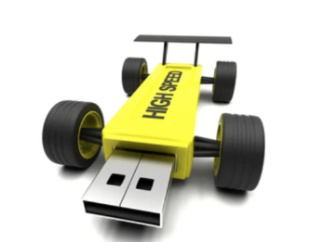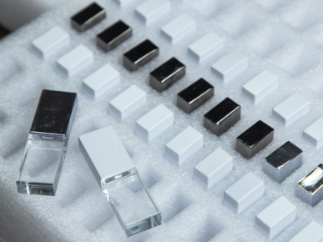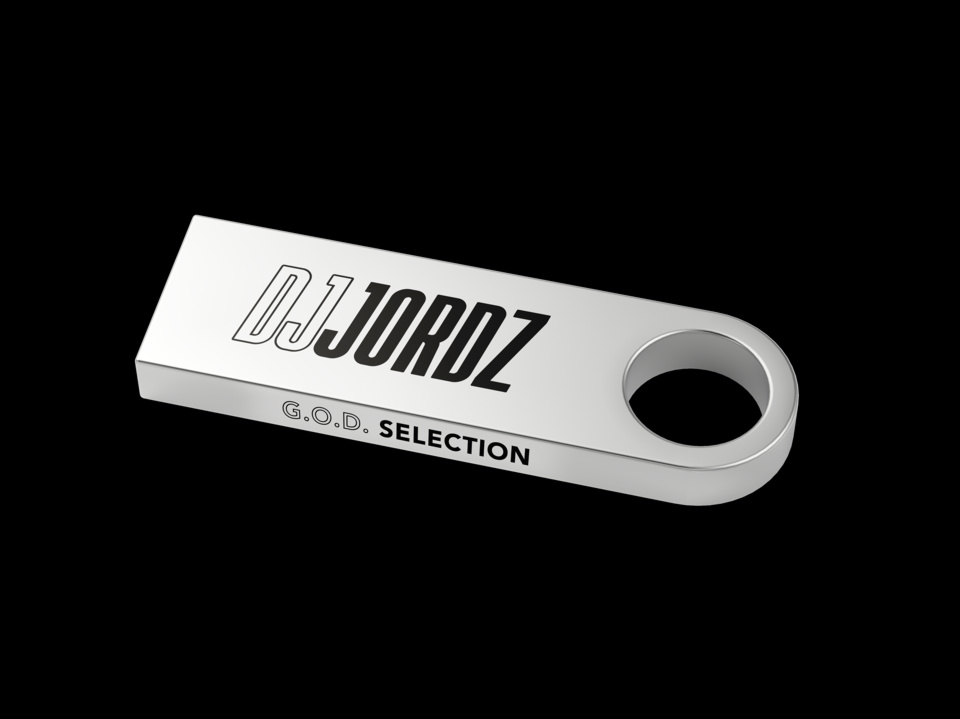You buy a 16GB USB flash drive as a back-up to store your project files. After copying dozens of files on it, you go back to read them. To your horror, all the files are unreadable.
What happened?
You were conned into buying a fake flash USB drive. It happens more often than you may imagine. What you're promised isn't what you get. And it only leads to frustration and money down the drain. In this post, we tell you how you can tell a quality flash drive from a fake one.
USB flash drives are made of metal or hard plastic. Some come in a stylish leather casing. If you prefer a leather USB drive, make sure you're paying for genuine leather. Counterfeit leather falsely advertised as being real leather is hard and loses its shape after you bend it, assuming a convex shape. Genuine leather USBs are soft to the touch, have a smooth texture and fold freely without losing their shape.
When people talk of fake flash USBs they're referring to how the advertised storage capacity isn't what it really is. A USB contains a flash chip that stores data, and is available in sizes 8, 16, 32, 64 and so on. The flash memory controller of the USB drive formats the memory chip and transfers data between digital devices.
A fake flash USB drive misprograms the controller to indicate a bigger chip than what is actually installed. So, it is possible to put in a 16GB chip and have the controller report its capacity as 64GB or more. Once the 16GB space gets filled, the controller activates an internal component to write data in the same location. As the data keeps getting overwritten, you keep losing your precious files and photos.
The only way to check the real drive size is to test the USB drive before using it. There are multiple online tools that help you figure out whether you've bought a fake flash USB drive. Here's a look at a few.
H2Testw is a free tool to verify the correct capacity of USB flash drives. It does not require installation (you can download it and delete after use), and is easy to use. In fact, most resellers use this tool to ensure that the inventory they have purchased is authentic before they list memory cards or flash USB drives on the internet to sell.
The test can take several hours but the results are reliable.Contact us to get H2 software.
This is a quick tool to test the capacity of USB flash drives. But it is also a risky one as it will delete all the data on your drive as part of the test. So, make sure you've removed important files from the device before you run the test. FakeFlashTest also recommends repartitioning and formatting your USB flash drive after the test.
In layman's terms, partitioning means dividing your flash drive into one or more partitions based on your personal requirements. Putting a partition allows you to organize your data so you can find what you need easily. For example, you can allocate partitions for personal media files, installed apps and backup data. This also creates an extra layer of protection for your most important data. Formatting your USB flash drive will organize your data and free up space for additional storage. Learn how to format a USB drive here.
ChipGenius doesn't detect the capacity of a USB flash drive. Rather, it reads the chip data and compares it against a reliable database that confirms whether the make and model of the device is what you were led to believe. This is a good test to check for counterfeit brands. USB flash drives from a fake brand are likely to have faults and performance issues. When in doubt, ChipGenius can help verify product authenticity.
Quick Disk Test has been created in Java, which means that besides Windows, it can also run on other operating systems, like Mac and Linux. However, you must have Java installed on your system.
Start by choosing any amount of data that is useful to you. For instance, you can choose to fill 40% of the drive or a custom amount of data. Alternatively, you can also use the “leave free” option to do the opposite. As mentioned previously, flash USB drives are available in capacities like 2 GB, 4 GB, 8 GB, 16 GB and more. You can start with data that covers some or all those capacities.
You can stop the process while writing data to the drive and restart the program later. The tool will continue filling data where it left off.
Flash drives are not intended to be permanent back-ups. That's what an external hard drive and cloud back-up are for. It's fine to buy a cheap flash drive so long as it's not a dirt-cheap one on eBay that is highly likely to have substandard components and a short lifespan from driving the production costs too low. If you rely on USB flash drives for frequent file transfers, prioritize quality and brand reputation over price. Quality flash drives will last you at least a few years and provide reliable performance over this time.

 Bulk USB Drives
Bulk USB Drives
